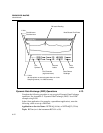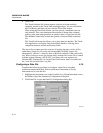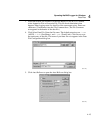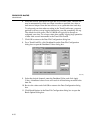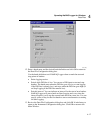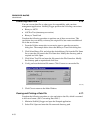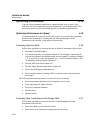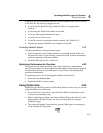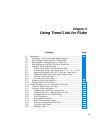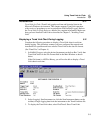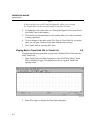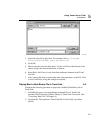
2640A/2645A NetDAQ
Users Manual
4-20
Optimizing Performance 4-18.
You can set up instrument operations to optimize either your system’s data
collection rate or measurement precision, depending on your requirements. The
procedures in this section describe the options for optimizing performance.
Optimizing Performance for Speed 4-19.
To optimize the data collection rate of your system, you can alter the parameters
that affect the instrument’s scanning rate, the data put through from the
instrument to the data file, or the speed of the network.
Increasing Scanning Rate 4-20.
Follow these guidelines to increase the rate at which an instrument collects data.
• Select the Fast Reading Rate.
• Use similar functions on contiguous channels. For example, if measuring dc
volts on four channels and thermocouple on four channels, configure channels
1, 2, 3, and 4 for dc volts, and channels 5, 6, 7, and 8 for thermocouples. (See
“Configuring Analog Channel Functions.”)
• Turn the Drift Correction feature off.
• Turn the Open Thermocouple Detect feature off.
• Do not use the Trigger Output function.
• Do not monitor channel readings, DIO or totalizer status at the instrument
front panel.
The following measurement features can also slow down scanning.
• Slow measurement functions such as frequency and ac volts.
• Using Autorange for range selection.
• The use of computed channels.
• Mx+B scaling.
• Channel alarms.
Increasing Data Transmission and Storage Rate 4-21.
Follow these guidelines to increase the rate of data throughput from the
instrument to the data file.
• Select Fast Binary as the data file format.
• Do not have more instruments logging than are necessary.



